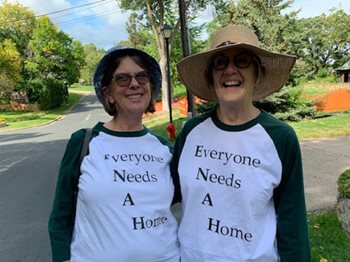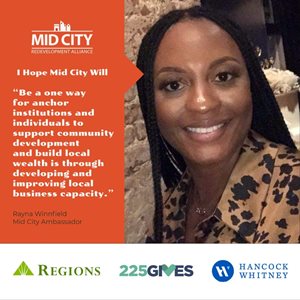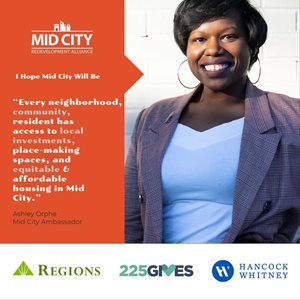Two years ago, when Minnesota's Aeon examined the nonprofit's future plans, they looked, as usual, at funding. The pandemic added a new sense of urgency. Could they rely on their usual funding sources? Would donors have money to give?
"We were very worried when the pandemic started,"says Tashia Weisenburger Pomroy, Aeon's corporate and community engagement manager. "But we've done lots of pivots in the last couple of years."Pivoting for fundraising was no different. They hired a gift officer and found that their donors did come through. But their special events committee also started a new, peer-to-peer fundraising campaign called Hustle for Home.
While they'd tried peer-to-peer before, where individuals ask social circles to help support a cause, it became more central during the pandemic. "Those folks really pushed to a larger audience,"Pomroy says. And the theme – sponsors contribute to the nonprofit in support of participants meeting exercise goals – resonated.
"The first year we tried Hustle for Home, people were hunkered down,"Pomroy says. "They turned to exercise as a means to cope."In 2020, the effort brought in $19,000. And in 2021? They raised $24,000. They had a matching gift to boost donations. They also encouraged people to work in teams, fostering more connection.

Pomroy says the challenge appeals to athletes of all different types – from inline skaters to marathon runners. Bremer and Fowles decided to walk. To make it more interesting, they counted neighborhoods instead of steps. "We figured out there were 45 neighborhoods in our community,"she says, "and it looked like we could walk through parts of three or four neighborhoods a day when the weather was good. This became our fitness goal. Besides the fun of seeing places in our community that we'd never seen, we also noted where there were (and weren't) duplexes and apartment buildings, giving us a better handle on that for our advocacy work."
Plus, she says, it was fun. Bremmer and Fowles raised $3,051 for Aeon, more than they could have contributed on their own. Pomroy says they'll hold the event again in September – a time that works because everyone is "back-to-business,"and because it's a good time to exercise outside in Minnesota.
Mid City Redevelopment, a NeighborWorks network organization in Baton Rouge, Louisiana, tried
 peer-to-peer fundraising for the first time during the pandemic. A smaller NeighborWorks organization ("we're a team of eight, with no one devoted to marketing or fundraising,"says Marlee Pittman, director of community development) the organization doesn't often use social media. Their usual fundraising event is a gala, which they couldn't hold during COVID. So they tried a peer-to-peer program, asking residents to sign up as ambassadors.
peer-to-peer fundraising for the first time during the pandemic. A smaller NeighborWorks organization ("we're a team of eight, with no one devoted to marketing or fundraising,"says Marlee Pittman, director of community development) the organization doesn't often use social media. Their usual fundraising event is a gala, which they couldn't hold during COVID. So they tried a peer-to-peer program, asking residents to sign up as ambassadors.Those residents had to explain why they love Mid-City and were asked to donate $30 in honor of Mid-City's 30th anniversary. That way, they could say, "This is why I love Mid-City and this is why I gave,"Pittman says. "It was important for residents to give before asking others to do the same."
The project, conducted mostly through social media, generated $31,700, including matching grants.
 Fifty-three ambassadors shared their message. "It adds up,"Pittman says. In 2021, with the anniversary over, they raised $25,000, including $6,000 in small donations. "It's still above anything we've ever raised before," Pittman says. They anticipate keeping peer-to-peer as a fundraising tool, even if they bring back their gala.
Fifty-three ambassadors shared their message. "It adds up,"Pittman says. In 2021, with the anniversary over, they raised $25,000, including $6,000 in small donations. "It's still above anything we've ever raised before," Pittman says. They anticipate keeping peer-to-peer as a fundraising tool, even if they bring back their gala. Pittman says it was a lift for staff "to be able to see how much people love and appreciate your work, and see the value in it, to see how many residents are ready to give a little. Anyone, no matter how small your organization, can lean into peer-to-peer – as long as you have people who believe in your work.”

